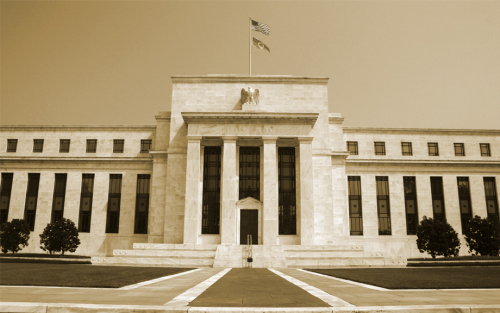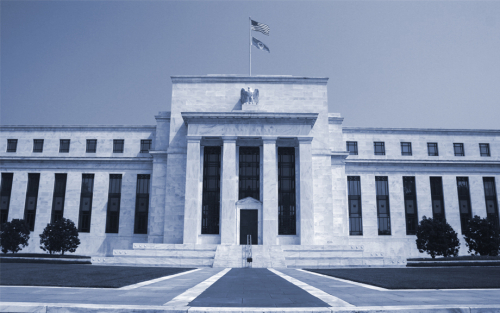Dealer Participation in the TSLF Options Program

Our previous post described the workings of the Term Securities Lending Facility Options Program (TOP), which offered dealers options for obtaining short-term loans over month- and quarter-end dates during the global financial crisis of 2007-08. In this follow-up post, we examine dealer participation in the TOP, including the extent to which dealers bid for options, at what fees, and whether they exercised their options. We also provide evidence on how uncertainty in dealers’ funding positions was related to the demand for the liquidity options.
Options of Last Resort

During the global financial crisis of 2007-08, collateral markets became illiquid, making it difficult for dealers to obtain short-term funding to finance their positions. As lender of last resort, the Federal Reserve responded with various programs to promote liquidity in these markets, including the Primary Dealer Credit Facility and the Term Securities Lending Facility (TSLF). In this post, we discuss an additional and rarely discussed liquidity facility introduced by the Fed during the crisis: the TSLF Options Program (TOP). The TOP was unique among crisis-period liquidity facilities in its provision of options. A follow-up post will analyze dealer participation in the TOP.
Just Released: Puerto Rico and the U.S. Virgin Islands after Hurricanes Irma and Maria

An examination of the fallout from Hurricanes Irma and Maria on the economies of Puerto Rico and the U.S. Virgin Islands was the focus of an economic press briefing today at the New York Fed. Both U.S. territories were suffering from significant economic downturns and fiscal stress well before the storms hit in September 2017, raising concerns about their paths to recovery.
The Evolution of Mexico’s Merchandise Trade Balance

Mexico runs a trade surplus with the United States owing to oil exports and cross-border supply chains, with imported U.S. components assembled in Mexico and then exported back to the United States. At the same time, Mexico runs a large trade deficit with Asia, the result of a surge of imports from that region over the past two decades. From Mexico’s perspective, this growing deficit with Asia has worked to offset an increasing trade surplus with the United States. More recently, the country’s merchandise balance suffered a substantial deterioration with the collapse of petroleum prices in late 2014. The balance has subsequently staged a modest recovery, as Mexico’s demand for Asian goods has cooled while the surplus with the United States (excluding petroleum trade) continues to trend higher. These developments have helped Mexico reduce its need to borrow more from the world to make up for lost petroleum export revenues.
Just Released: Very Favorable Business Climate Indicated in February Business Leaders Survey
The region’s services sector continues to experience solid growth, according to the New York Fed’s February Business Leaders Survey. The survey’s business climate index reached a record high, and the activity, employment, and capital spending indexes were all fairly steady at high levels, indicating continued expansion. Firms were increasingly optimistic about future business conditions, and strong gains in employment were expected in the months ahead. Notably, price pressures picked up, with the prices paid index advancing to a level not seen since 2014, and the prices received measure reaching its highest mark in six years.
Landing a Jumbo Is Getting Easier

Andreas Fuster, James Vickery, and Akhtar Shah The United States relies heavily on securitization for funding residential mortgages. But for institutional reasons, large mortgages, or “jumbos,” are more difficult to securitize, and are instead usually held as whole loans by banks. How does this structure affect the pricing and availability of jumbo mortgages? In this […]
Just Released: Great Recession’s Impact Lingers in Hardest‑Hit Regions

The New York Fed’s Center for Microeconomic Data today released our Quarterly Report on Household Debt and Credit for the fourth quarter of 2017. Along with this report, we have posted an update of state-level data on balances and delinquencies for 2017. Overall aggregate debt balances increased again, with growth in all types of balances except for home equity lines of credit. In our post on the first quarter of 2017 we reported that overall balances had surpassed their peak set in the third quarter of 2008—the result of a slow but steady climb from several years of sharp deleveraging during the Great Recession.
Does More “Skin in the Game” Mitigate Bank Risk‑Taking?

It is widely said that a lack of “skin in the game” would distort lenders’ incentives and cause a moral hazard problem, that is, excessive risk-taking. If so, does more skin in the game—in the form of extended liability—reduce bankers’ risk-taking? In order to examine this question, we investigate historical data prior to the Great Depression, when bank owners’ liability for losses in the event of bank failure differed by state and primary regulator. This post describes our preliminary findings.
Hey, Economist! What Do Cryptocurrencies Have to Do with Trust?

Bitcoin and other “cryptocurrencies” have been much in the news lately, in part because of their wild gyrations in value. Michael Lee and Antoine Martin, economists in the New York Fed’s Money and Payment Studies function, have been following cryptocurrencies and agreed to answer some questions about digital money.
A DSGE Perspective on Safety, Liquidity, and Low Interest Rates

Marco Del Negro, Domenico Giannone, Marc Giannoni, Abhi Gupta, Pearl Li, and Andrea Tambalotti Third of three posts The preceding two posts in this series documented that interest rates on safe and liquid assets, such as U.S. Treasury securities, have declined significantly in the past twenty years. Of course, short-term interest rates in the United […]














 RSS Feed
RSS Feed Follow Liberty Street Economics
Follow Liberty Street Economics